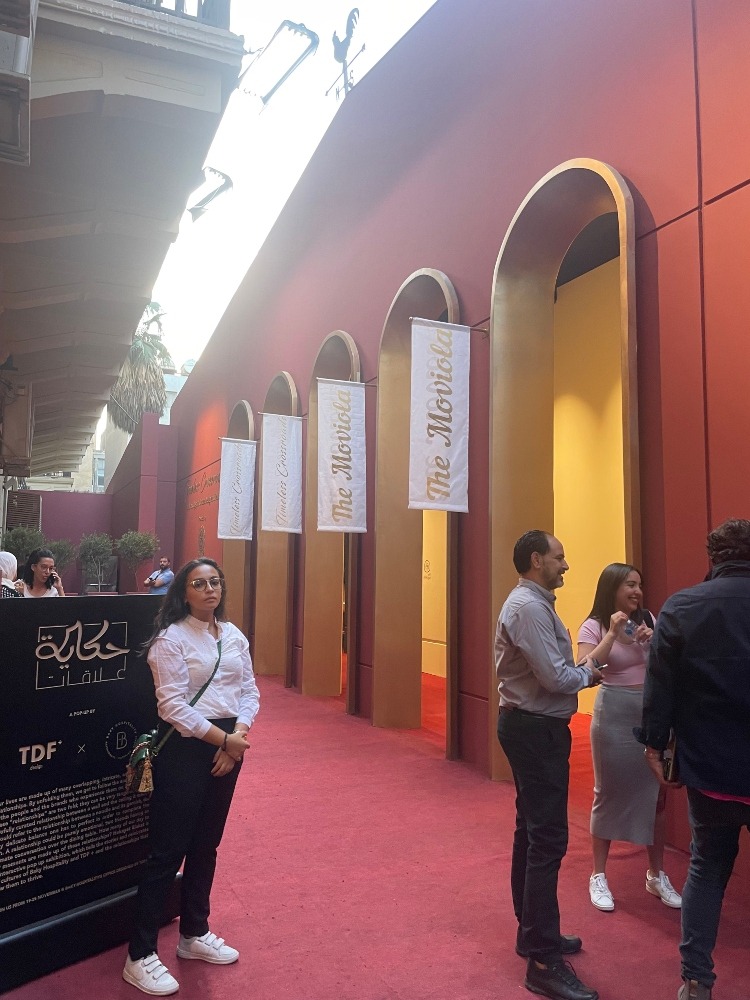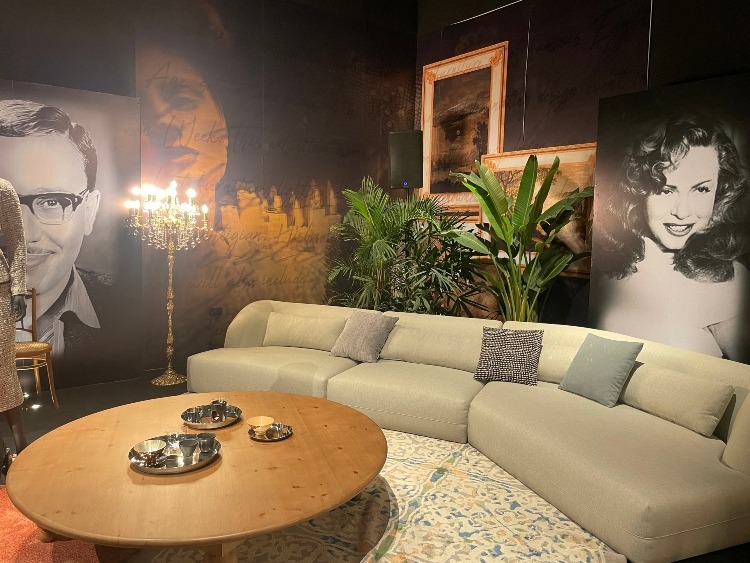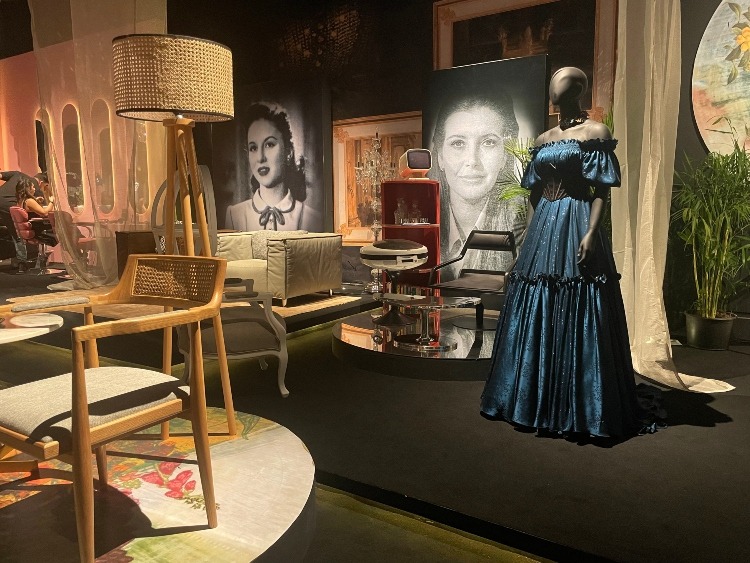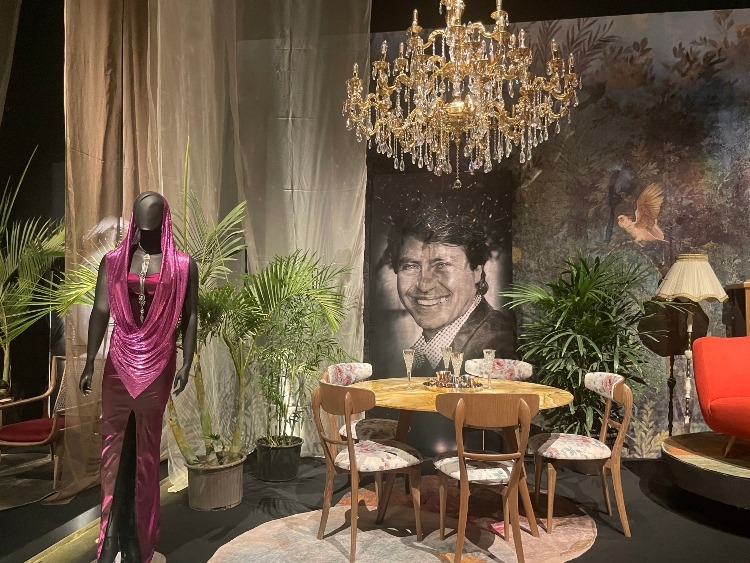For the first time ever, Cairo is holding its very own Design Week, molding together art, fashion, and design through a collection of exhibitions, installations, and events spread across El Korba’s most significant architectural landmarks. It’s the ultimate hub for local and regional designers to come together, interact, network, and share insights. One such designer is the Armenian-Egyptian Karim Mekhtigian, a renowned designer, art director, and architect who melded his passion for Egypt’s rich heritage and his affinity for design by creating his special exhibition, Moviola at the iconic Cayan building at El Korba.
Idea Behind Moviola
Mekhtigian is known to have founded many infamous design brands but when it comes to Cairo Design Week, he wanted to bring one particular brand to the forefront, his passion project dubbed Us which he co-founded with Marwa Sabah. Its a brand that sets up exhibitions and curations with a focus on reviving Egypt’s rich culture and sharing it with the masses. To him, Cairo Design Week was the ultimate stage to place Egypt’s heritage at the forefront:
“Cairo Design Week was one of our dreams for the last 15 years… I am really honored that we are presenting Moviola in such a prominent event.”
Karim Mekhitigian
Us’ first project is Moviola which is a scenography he set up with Hisham Mahdy, the acclaimed art director and president of Cairo Design Week. With Mekhtigian as the alchemist and Mahdy as the magician, the two artists wanted to shed light on the country’s film industry and celebrate its journey and success. To do so, they handpicked seven films from Egypt’s golden age of cinema, starting from the 1950s all the way to the late 1970s, and re-created some of their scenes through furniture, decor, and fashion. The collection included classics like “The Nile Bridge”, “Loved by Three Men”, “Sleepless”, “Barefoot On The Gold Bridge”, “The Next-Door Girl”, “The Name Caller” and “The Black Candles.”

Moviola truly does epitomize the glitz and glamour of that time period as even before you step into its large exhibition hall, you will be met with a long-winding scarlet red carpet stretched along a narrow path guiding you to the event’s entrance of large overlapping archways. Even the guests exemplified that time period, making you feel like you are walking inside a film studio back in the 70s. Donned in cowboy boots, brown leather pants, and large neon sunglasses with paparazzi snapping quick takes of the fabulous guests, it’s akin to being at a big-time celebrity party.
Getting Close & Personal with Moviola’s Set Pieces
Taking a step inside through the archways, you will walk through a small corridor before reaching Moviola’s entrance. Housed in an enormous square hall, every corner of the space is devoted to a certain collection of furniture, costumes, and plants accompanied by large hung posters of infamous classic celebrities like Faten Hamama and Rushdy Abaza. Without a guide, it will be difficult to make a link between each set piece and the film it represents so we’d recommend taking a tour with any of the staff members donned in an all-black uniform.

Taking a walk with Yara Ashraf, a technical designer and staff member of the Moviola exhibition, it became clear that not every set piece represented a certain film but rather that the entire exhibition as a whole mirrored the essence and language of classic Egyptian cinema through fresh, new contemporary design. Ashraf noted that some of the set pieces were actual replicas of famous scenes from a few of the films. For example, with a film like “The Black Candles” that chronicled the story of a blind man with a vested hatred towards women, Moviola exemplified the film’s essence by showcasing the infamous chair, German Shepard, and fireplace that were seen throughout the film recreating it with a contemporary, bold twist.

Furniture and decor were not the only ways that Moviola celebrated Egypt’s golden age, in one corner of the room was a special pink booth where guests would get to blow dry their hair and re-create classic 60s hairstyles. As a whole, the entire exhibition relied on tactile and sensual experiences to bring to life that precious time and by doing so, it showcased the power of design in telling a story or creating a type of ambiance.

A Fun Chat With Moviola’s Mastermind
To get a taste of the essence of Moviola, we spoke with its creator Mekhtigian who stressed how Moviola is his biggest exhibition to date that places a lens on the world of cinema. To him, the exhibit is all about showcasing the power of production design and how it can communicate vital cultural aspects of Egypt’s rich heritage to the masses:
“We have to get inspired by our own culture, our own heritage, our cinema, poetry, history, whatever we have. We wanted to highlight the multilayered richness of Egypt.”
Karim Mekhtigian
Beyond that, to him, the bigger purpose behind the exhibition rests on the younger guests in attendance. By showcasing these old classic films, the younger generation will get to be exposed to Egypt’s past and how it operated back in the 50s and 60s. I myself was inspired by this exhibit because it encouraged me to watch some of these films, ones that I never heard of before. Merely attending and witnessing snippets of Egyptian classics as re-created design pieces may inspire others as well to tap into that special time.

The only downfall of such an event was that it seemed to attract a very specific niche type of audience made up of prominent designers, artists, and journalists. It was a rarity to see younger people or students in attendance but at the end of the day, the event is one that is still ongoing and will continue until Nov 25. Maybe throughout those days, more young people will come, get inspired, and take a journey back in time with these old films.
If you are planning to check out Moviola, you can head to the Cairo Design Week official website for all the details including location and timings.
WE SAID THIS: Don’t Miss…Celebrating The Art Of Photography At Egypt’s Female-Led Workshop: Women Who Create



